What is the solution for our brick chimney/ceiling?
I saw the article by Joe titled Efflorescence = Water Damage — Building Science Podcast and had a question relating to possible efforescence on my chimney and walls/ceiling in my home. I own a farmhouse built in 1900. It has an old chimney used to vent our boiler and hot water heater. We have a mudroom that connects the garage to the house and within the mudroom that has the roof above it. The mudroom has a part of the chimney that has been finished to create a wall.
We have had damage around the ceiling and wall of the chimney that I now know is efferescence. We have had the flashing on the roof caulked which does fix the problem temporarily. I couldn’t find any local chimney repair co so in 2009 had an out of town chimney company inspect and seal due to 5 bricks spalling.They say they sealed the chimney and the bricks were still spallng and damage was back in my mudroom so with my warranty resealed it again about 6 months ago with some improvement (ceiling appears dry). I am not sure if they know what they are doing though because I just found out they have an “f” by the bbb for complaints about their work. I called them again because I noticed small chips of brick spalling (which is an improvement) to ask if it should be repaired and painted. They said “oh it is painted” (That is what they have been sealing all along). So now that they just recently noticed that the chimney has been painted and are now noticing some morter is wearing down some on the inside of the chimney (outside morter is not) now say it needs to be torn down and rebuilt.
I contacted someone else who refinishes old houses in the area and he thinks that we should patch up the bricks and repaint it with an oil based paint because the chimney looks to be in descent shape otherwise. He thinks the damage in the mudroom is the flashing around the chimney. I was wondering if there is efferescence under the painted brick would the oil paint suggestion solve the problem or do i need to tear down the chimney and rebuild it. ANY help would be greatly appreciated!
I attached photos. The roofline in first chimney picture is not the roof line. The last one is.
GBA Detail Library
A collection of one thousand construction details organized by climate and house part


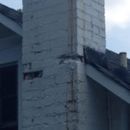
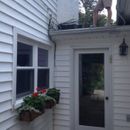
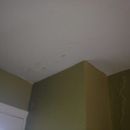
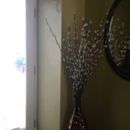
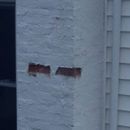







Replies
Page,
There are two possible origins for the moisture causing the damage that you have documented. It's possible that your chimney flashing is defective. It's also possible that the moisture is flue-gas condensate.
The best way to flash a chimney at the roofline is with through-chimney flashing. Unfortunately, this type of flashing is rarely installed. Proper installation of through-chimney flashing requires all of the bricks above the roofline to be disassembled. After the flashing work is done, the chimney top can be rebuilt with the old bricks or with new bricks. (I am attaching an image below from a JLC article showing some of the features of through-chimney flashing.)
There are several reasons why flue-gas moisture might be condensing. The two most common reasons are an oversized flue and a cold chimney. For more information on this topic, see my article (originally published in the Journal of Light Construction), "When a Flue is Too Big."
To determine the source of the moisture problem you have documented, you need to hire a skilled mason who understands chimneys. Good luck.
Thank you for the quick response. i meant to add we
are going to sell our house. Would you still recommend the above fix or patch and paint?
One other question? If we were to tear down the chimney, since it is used for a boiler/water heater, could we tear down the chimney and reroute gases with a cheaper option rather than rebuilding chimney (it isn't in an area that you would miss it aesthetically). Thanks so much for the advice!
Page,
Q. "We are going to sell our house. Would you still recommend the above fix or patch and paint?"
A. To answer that question, you should consult a lawyer or a real-estate expert. As far as I understand, in many states, home sellers are required by law to disclose any known defects. Now that you have researched the topic and learned about your defective chimney -- and now that your question has been posted in a public forum -- you are probably required to disclose the defect to any interested buyer.
If this were an ethics column instead of a construction advice column, here's what I would answer: you are ethically obligated to fix the problem or to inform the buyer about any known defect in your home.
Page,
If you decide to tear down the brick chimney, you could replace it with a new stainless-steel chimney. The new stainless-steel chimney would probably cost less (and work better) than a new brick chimney.
If you could paint this, that sounds like a better option. Would a general contractor be the one to contact to install this or another specialized contractor? Thank you
Page,
Your entire chimney is crumbling. The bricks are getting saturated, and the bricks are spalling (perhaps due to freeze/thaw damage). Your ceiling and walls are getting wet due to moisture that is either leaking through bad roof flashing or is condensing from flue gases that encounter cold surfaces in your flue. You have a major problem on your hands. Paint ain't gonna fix it.
I was referring to painting a stainless steel chimney. Can you pAint the stainless steel replacement pipe to conceal it better?
Page,
Sorry for the misunderstanding.
You would probably want to box in the chimney with studs and drywall.
Many chimneys will rot out from the inside due to flue condensation when newer higher efficiency and "right sized" boilers with lower output are installed. It's not about the quality of the brick-work, it's the size of the liner relative to the BTU output of the boiler and the temperature & acidity of the exhaust. If the cross section of the flue is too large it slows the velocity of the exhaust, and with lower temp exhaust of higher-efficiency equipment there is more moisture & acid being deposited on the masonry from the interior. The exterior degradation from rain/snow/ice moisture is often just the icing on the cake, not the underlying problem.
Ripping it out and installing something else is probably the "right" solution.
What is your current boiler fuel, BTU rating, and flue liner size?